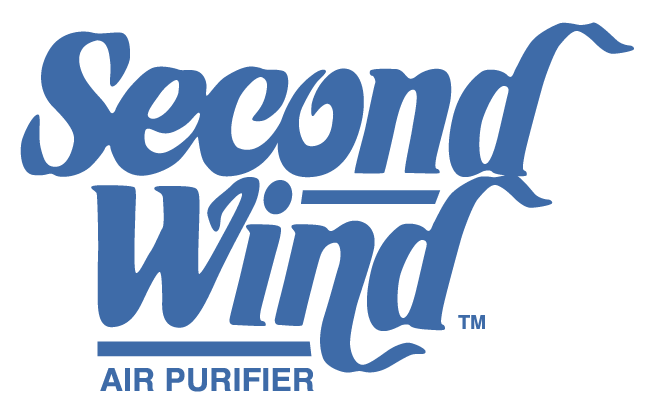Jamie Gold; From the Sand Diego Union-Tribune
Dr. Noah Friedman, chief of Kaiser Permanente’s local allergy, asthma and immunology specialty area, has seen patients sniffle, sneeze, cough, wheeze, gasp and itch for more than a quarter century. And he has some tips for easing their suffering — maybe yours, too.
These tips aren’t medical; they’re environmental. What’s in your house, condo or apartment can impact how healthy you feel.
Making homes healthier
Jillian Pritchard Cooke knows that firsthand. A successful interior designer focused on sustainability, Cooke was working on a prestigious project in 2006 when she had a serious health scare.
“I was diagnosed with a rare form of tissue cancer, which my physicians believed to be caused by environmental exposures,” she recalls. That made Cooke realize that there was a lack of information available to help reduce toxins in homes, so she set about developing an educational program that would address this need. “Wellness Within Your Walls(WWYW)” was born, and the Atlanta-based organization currently advises and educates the industry and home buyers on making and choosing products that are healthier to live with.
Essential indoor air quality
“I believe indoor air quality is very important to health and wellness,” she says, and energy-efficient home building codes can have a big impact by keeping air (and pollutants) locked inside.
“WWYW coined the term Tight Box Syndrome to describe the ventilation issue,” says Cooke. Harmful toxins are in products like paint, furniture finishes, carpeting, flooring, mattresses and even appliances and TVs, she adds. Cleaning products, pesticides and synthetic air fresheners can also adversely affect indoor air quality.
“As buildings become tighter for the sake of energy efficiency and leaky houses are sealed up, the quality of indoor air can significantly drop if well-designed ventilation systems aren’t in place,” says Kelly Aljibury Kreuzinger, sustainability instructor at the Design Institute of San Diego and a sustainability-focused local interior designer. Finish materials in your home can emit potentially harmful chemicals long after they’re installed, she adds.
With city water crises like the one in Flint, Mich., and the earlier problem with drywall from China, people are rightly concerned about their families’ health, and our homes are an area that we can — and should — address.
Technology is playing a role. “The air ventilation industry has made great strides in reducing harmful toxins through air purification technology,” says Cooke. “We will see many more innovative systems in the coming years,” including air quality control systems using smart home technology that detect and eliminate harmful toxins.
In the meantime, there are already VOC (volatile organic compound) detector fans on the market that can sense and eliminate dangers, Cooke says. It is also important to have a carbon monoxide monitor in your home to detect that danger, especially near the garage. Having a radon detector, particularly if you have a furnished basement, is also beneficial.
Sustainability embraces wellness
The industry is also playing a role, with sustainability programs like Leadership in Energy and Environmental Design (LEED) awarding points for indoor air quality (IAQ). And IAQ is a “fundamental component to sustainable design,” Kreuzinger says. Using low-emitting building products will earn points toward a LEED for home certification, she adds.
With a greater focus on family health, along with the health of the planet, the industry is making these products easier to find and afford. Consumers and design professionals can look for Greenguard and Floor Score, which certify that products comply with emissions criteria, she suggests. With greater attention to these issues, homeowners and industry pros now have a much easier time obtaining products that help them breathe easier.
Kitchens and baths
Both of these well-used spaces can create IAQ issues, Cooke and Kreuzinger agree. And both require excellent ventilation systems. In the kitchen, “Recirculating hoods do not remove enough contaminants from the air,” WWYW’s founder advises. Not cleaning them regularly is another problem. “I personally think the solution is as simple as using a hood that supports disposable wool filters. They are compostable and are a natural fire retardant,” Cooke says. They are also easy to change and maintain, she adds. (If you’re not purchasing a new vent hood for your kitchen, check with the manufacturer or appliance instructions to make sure the one currently installed will work properly with disposable wool filters before purchasing them.)
“Cooking, especially with a gas stove, releases a significant amount of nitrogen dioxide, particulate matter and carbon monoxide, which can increase the likelihood of respiratory problems,” Kreuzinger says. Induction ranges and cooktops can be a high performance alternative, and easier to clean as well.
“Moisture can cause a host of health problems with regard to mold and mildew, so bathrooms need to be well-ventilated,” the Design Institute instructor points out. “Installing systems that exhaust to the outdoors are a necessity when designing for healthy indoor air.”
“We recommend repairing any mold damage, particularly if the home smells musty or moldy,” Kaiser’s Dr. Friedman also advises. If any household members have mold allergies, which they may not even know about, it can be especially dangerous.
Sleeping areas
“Allergens in bedrooms have the greatest effect on allergies because of the amount of time one tends to spend there,” the doctor says. “The most common indoor allergens are dust mites, pets and molds. Dust mites are very prevalent in beds, so we recommend covering mattresses, box springs and pillows with special casings and washing all bedding in hot water every two weeks.”
“Natural bedding made of cotton, linen, hemp or bamboo should be considered for comfort,” Cooke says. “Mattresses made of quilted or tufted all-natural materials including wool and cotton batting should be your first choice in achieving a healthy bedroom.” The others can include toxins, she says, and should be stored in a garage during their off-gassing period.
“Removing carpets, particularly in the bedrooms, can be very helpful if one can afford it,” Friedman advises. If having softness underfoot is important to you, Cooke suggests looking for all-wool or other natural fibers for carpeting or rugs. Synthetics tend to off-gas, the WWYW founder says, but even wool finished with stain resistance can be problematic.
Last words
According to the Environmental Protection Agency, Kreuzinger says, “Americans, on average, spend 90 percent of their time indoors, where the concentrations of some pollutants are often two to five times higher than typical outdoor concentrations.”
We’re fortunate to live in San Diego’s ideal climate, which allows us to beat that national average for outdoor enjoyment. When we are in our homes, though, it makes sense to keep our indoor air as pure as possible. You’ll breathe easier on a literal and figurative level.
Gold is a San Diego-based, independent kitchen and bath designer and the author of “New Kitchen Ideas That Work” and the “New Bathroom Idea Book.” Her website is jgkitchens.com.









